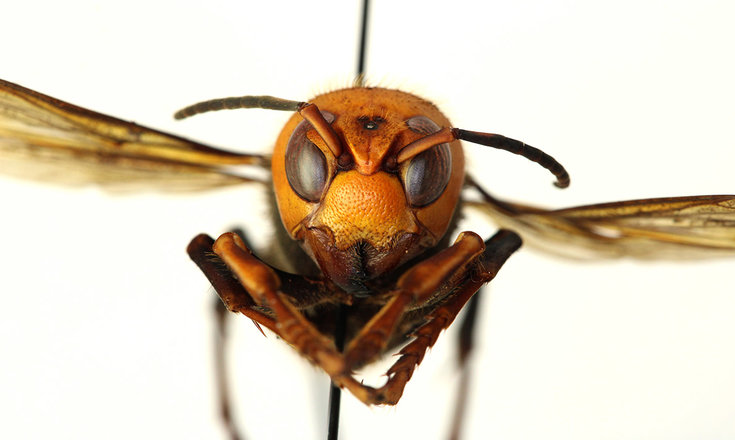Whiskey, Tango, Foxtrot or WTF is our new weekly column diving into the semi weird and confusing terrain of life as we know it currently. Is it news? We aren’t entirely sure, but we know it’s all important. Once a week our very own Thomas McKenzie will dive into a new and semi-ridiculous topic. Have an idea you would like explored? Please send him an email and maybe he will pick up your weird pitch.
The Asian giant hornet (Vespa mandarinia), also known as the “murder hornet,” has arrived in North America — Washington to be exact. There are several slivers of good news attached to this dark fact.
One, it’s the largest hornet in the world. Which hopefully means that hornets do not get even larger, or more murder-y. I really don’t know where we’d schedule them in among a global pandemic, a spiraling economy, a wounded environment, and our current political dumpster fire.
In general, humans don’t need to worry about murder hornets. They don’t attack people, usually; as long as you don’t accidentally step in a nest, which are located underground, or approach a beehive they’ve already conquered, you should be fine. So, make sure you don’t step on a thing you can’t see underground and keep your hands out of beehives, and there’s a fairly low risk that you’ll have to experience the wildly unpleasant sensation of hot thumbtacks being inserted into your skin. And, you can skip the painful and potent neurotoxin that their freakishly large bodies contain. Multiple stings can kill humans, even if they’re not allergic. Beekeepers have had to order specially reinforced suits just to keep themselves safe.
Here’s the actually bad news. Murder hornets are known for decimating honeybee colonies. According to Washington State University researchers, the hornets attack beehives, decapitating the adults and eating the larvae and pupae. A few hornets can completely destroy a hive in a matter of hours.
But the bees won’t roll over without a fight. If a hornet gets into the nest, a cloud of 400 worker bees will immediately surround it, forming a tight ball of buzzing little ass-kickers. The bees will vibrate their flight muscles, raising the temperature to 45.9 degrees Celsius. That means carbon dioxide levels also go up within that little sphere. Bees can handle the harsh conditions, but the hornet dies.They literally burn it to death with the heat from their undulating bodies.
Bad news. If enough hornets show up, they can overwhelm the hive’s defenses. And when they’re done with the bees, the hornets have ready access to a food bank of immature bees still tucked in their little waxen cradles, an excellent protein source for their own murder-y larvae.
Good and kind of weird news: The insects were once valued as a cheap source of protein in poverty-stricken rural areas. So, while they’re lethal, they’re also pretty tasty. Murder hornets can be preserved in jars, pan-fried, or steamed with rice. The adults, which can grow to be two inches long, are fried on skewers, stinger and all, until they become light and crunchy
Apparently, they leave a “tingling sensation” in the mouth, like eating too close to the middle of a pineapple. Murder hornets are sometimes drowned live in liquor, which prompts them to release their venom into the beverage, giving it an added kick. (It probably pairs nicely with fugu, the famous poisonous puffer fish.)
Bad news. It may come as no surprise that the practice of hunting and eating murder hornets, as with many traditions in rural Japan, isn’t as common today. While the consumption of these hornets may find a novelty resurgence among those seeking to add guilt-free protein to their diets, the main focus is definitely on eradicating these flying serial killers before they can spread, wiping out our already struggling bee populations.I’m taking shreds of good news where I can find them these days, because I’m not sure how much more bad news we can stand. Still to come: four colorful horses complete with riders, an earthquake, the sun turning to ashes, a sudden influx of locusts, raining frogs, the moon turning to blood, and the stars of the heavens falling to the earth.
“And Lo, the people did stream Netflix and order takeout, wearing comfortable garb designed for sport upon their unwashed bodies as they counted the days, waiting anxiously for some semblance of normalcy to return.”







Be First to Comment